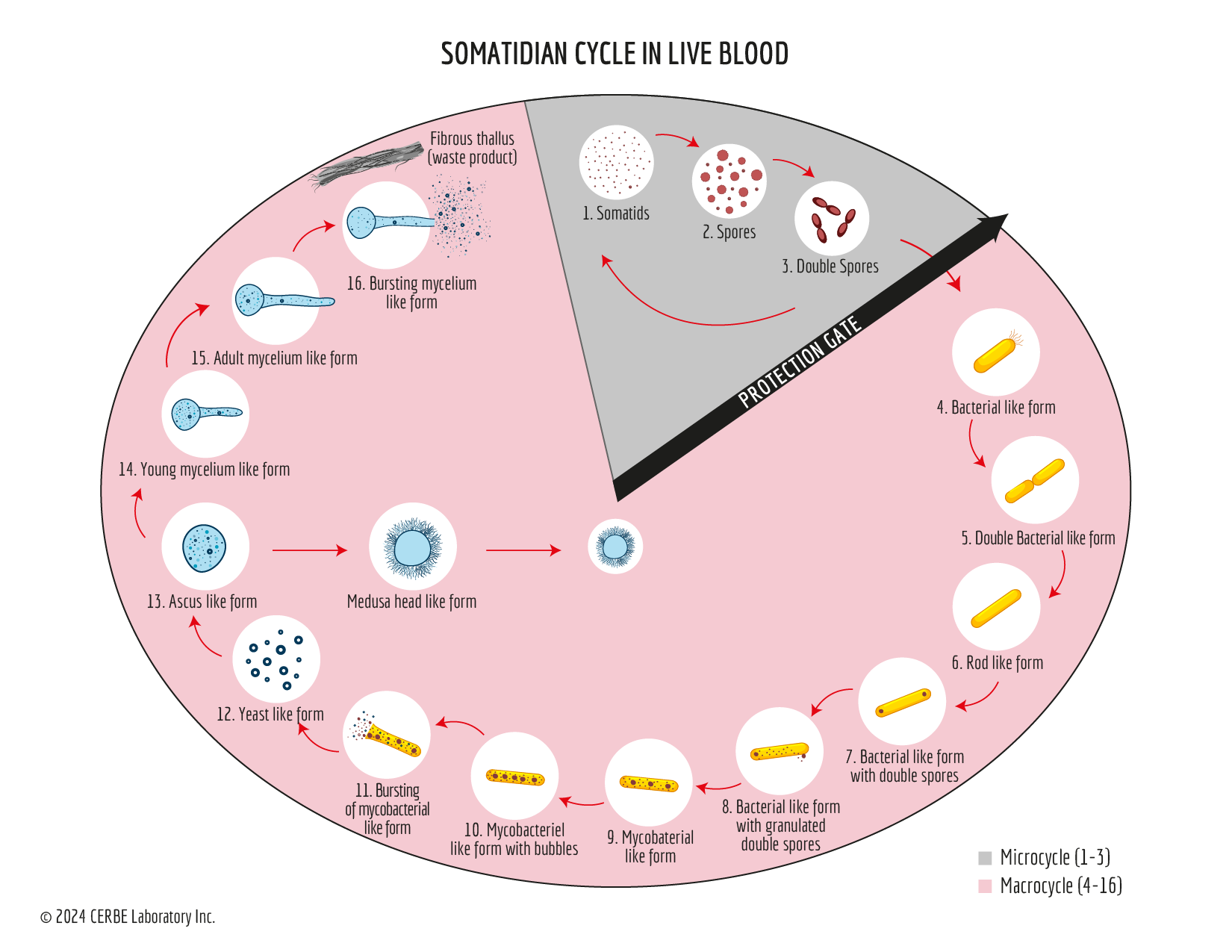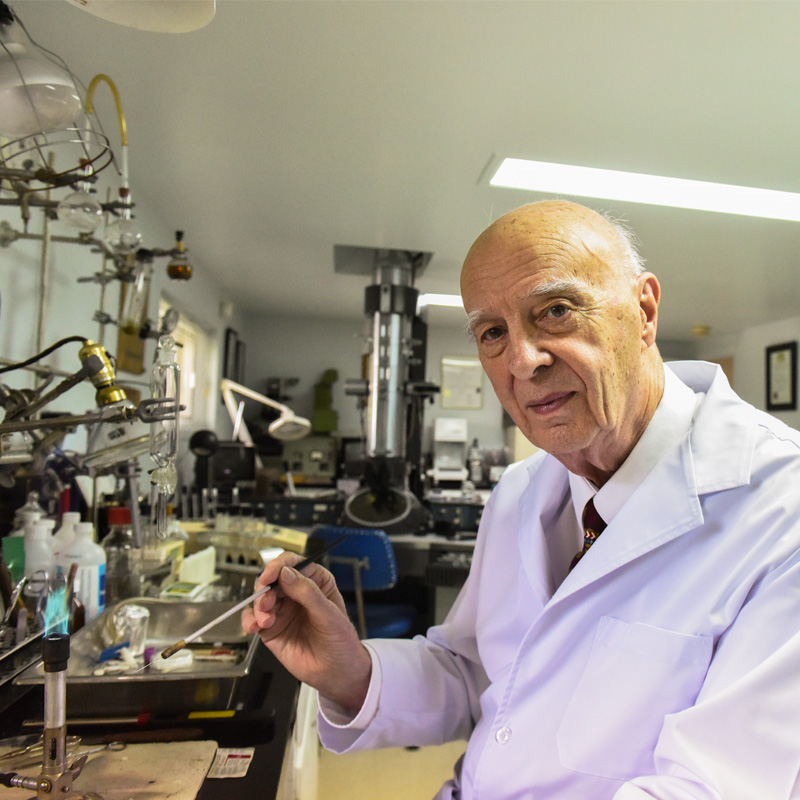History
The inventor: Gaston Naessens
The father of the 714X, Gaston Naessens, a French researcher biologist, was born in 1924 and passed away in Quebec (Canada) in 2018 at the age of 93.
In 1945, he obtained an engineering degree from the French National Scientific Union, with a specialization in biology, physics and chemistry.
His favorite research topic has always been the study of human blood (hematology), particularly the microscopic observation of live blood.
The tool: the somatoscope
In the late 50s, thanks to the manufacture of high-resolution optical microscope, the somatoscope, which Naessens was been able to see, in live blood, a small luminous living particle hitherto unknown to conventional biology.
The discovery: the somatid
Years passed before he could confirm the living nature of the particle that he had finally managed to extract from peripheral human blood. From this pivotal moment, he decided to name it somatid, derived from the Greek roots soma meaning body and tidos meaning life-giver.
The theory
Not only had he discovered a living particle, but also this particle visually presented a pattern of growth expressed in a repeating cycle of 16 consecutive phases (pleomorphism).
The two applications of somatidian orthobiology in the field of health
1- The preventive screening test (immune system status) based on live blood analysis
2- The restorative product of the somatidian cycle: 714X
- The preventive screening test for live blood
This discovery of the somatid and its evolutionary cycle in growth culture medium raised a lot of hope for the researcher, who saw the possibility of a new way of detecting the disruption of the biological terrain even before the onset of disease.
In the early 60s, in collaboration with French doctors, the researcher was able to correlate the presence of advanced somatidian forms (phases 4 to 16) with the presence of various pathologies.
It is from this understanding that Gaston Naessens was able to establish the presence of a natural protective barrier between phases 3 and 4 of the somatidian cycle in the blood.
This collaborative work in clinical research corroborated Gaston Naessens’ research hypotheses, which stemmed from his constant microscopic observations of live blood.
From this new understanding was born a new tool for observing live blood that had the potential to become a preventive screening test capable of measuring the state of natural defenses, including the immune system.
Phases 1 to 3 were the microscopic visual evidence of a harmonious biological terrain (health status). Phases 4 to 16 showed a correlation that heralded the disorganization of the biological terrain that could ultimately lead to various temporary or chronic biological disorders.
The observation of live blood became an innovative first application of the somatidian orthobiology in the field of health (preventive screening test).
Please note that Gaston Naessens’ live blood test is not and has never been a diagnostic test, an act exclusively reserved for health care professionals. — Gaston Naessens
- The restorative product of the somatidian cycle: the 714X
Faced with the microscopic observation of a disorganized biological terrain, it was necessary, in the researcher’s mind, to find a simple way to restore the balance with a non-toxic product.
In the researcher’s intention and understanding, a new product had to be able to prevent disease by harmonizing the somatidian cycle. It also had to meet the three following criteria:
- support Life without damaging the cells and/or tissues of the body (do no harm);
- must be liquid, in order to reach the large lymphatic circulation, and therefore injectable;
- be able to liquefy lymph by changing its biochemistry to flow easily and ultimately reaching the large blood circulation.
It is in this mind that the researcher wanted to create a product capable of restoring the protective barrier visible in live blood, i.e. maintaining the biological balance of the somatidian microcycle of phases 1 to 3 (visual markers of health).
This new understanding gave rise to an innovative restorative product of the somatidian cycle: 714X.
This product was conceived in the 70s (non-toxicity validated by a preclinical test in 1978). The scientific name of 714X is trimethylbicyclonitraminoheptane chloride.
To facilitate common use, its fancy name was inspired by the initials of the inventor’s name, GN: the G being the 7th letter of the alphabet and the N being the 14th letter. As for the X, being the 24th letter, it corresponds to the last two digits of the inventor’s year of birth to ensure paternity.
This immunomodulatory product thus became the second innovative application of the somatidian orthobiology and its evolutionary cycle in the human blood.






